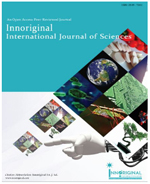FORMULATION AND IN-VITRO EVALUATION OF METFORMIN HYDROCHLORIDE LOADED MICROSPHERES FOR ORAL CONTROLLED RELEASE
Abstract
Biodegradable microspheres may develop improved drug delivery system to gastrointestinal tract, for treatment of Diabetes. Metformin hydrochloride have the ability to produce thus effect for extended period.The Objective of this Work to prepare metformin hydrochloride microspheres by using ethyl cellulose and polyvinyl alcohol as the retardant material with entrapment efficiency and extended release using solvent evaporation techniques.Also, the microspheres were prepared by the double emulsification technique with a yield (40%) are characterized . The Characterization was included : Optical microscopy, Scanning electron microscopy (SEM), Study the compatibility between the selected polymer and metformin hydrochloride by using IR and study the interaction between drug and polymer as well as the microspheres-drug polymer thermal behaviour and crystallinity by using DSC and XRD respectively.Drug release studies were conducted using the dissolution apparatus, the dissolution medium was phosphate buffer at pH 6.8. However the release of loaded metformin hydrochloride in microspheres occurred gradually of 30% up to 8 hours compared to the control which completely released within two hours.Key wards: Metformin, Ethyl cellulose, Polyvinyl alcohol, SEM, Evaporation techniques, DSC, XRD.References
Stepensky D, Friedman M, Sour W, and Hoffmann A. Preclinical evaluation of pharmacokinetic-pharmacodynamic rationale for oral CR metformin hydrochloride formulation, J. Control. Release, (2001); 71: 107–115.
Kouchak M, and Atyabib F. Ion-exchange. An approach to prepare an oral floating drug delivery system for diclofenac, Iran. J. Pharm. Res. (2004); 3 : 93–97.
Salunke P, Rane B, Bakliwal S, and Pawar S. Floating microcarriers of an antidiabetic drug: Preparation and its in-vitro evaluation, J. Pharm. Sci. Technol. (2010); 2 : 230–240.
Beneke C. E, Viljoen A. M, and Hammam J. H. Polymeric plant derived excipients in drug delivery, Molecules, (2009); 14: 2602–262010.3390/molecules14072602.
Freiberg S, Zhu XX. Polymer microspheres for controlled drug release. Int J Pharm (2004); 10;282(1-2):1-18.
Tamilvanan S, Sa B. Studies on in vitro release behaviour of indomethacin-loaded polystyrene microparticles, Int J Pharm, (2000); 25;201 (2): 187-97.
Martinac A, Grcic F, Voinovich D, Perisutti D, Franceschinis E. Development and bioadhesive properties of chitosanethylcellulose microspheres for nasal delivery, Int J Pharm (2005); 291 (1-2): 69-77.
Desai K. G. H, Park H. J. Preparation of cross-linked chitosan microspheres by spray drying: Effect of cross-linking agent on the properties of spray dried microspheres, J. Microencapsul, (2005); 22 (4): 377-95.
Palmieri G. F, Bonacucina G, Di MP, Martelli S. Spray-drying as a method for microparticulate controlled release systems preparation: advantages and limits. I. Water-soluble drugs, Drug Dev Ind Pharm, (2001);27 (3): 195-204.
Choudhury P. K, Kar M. Controlled release metformin hydrochloride microspheres of ethyl cellulose prepared by different methods and study on the polymer affected parameters, J Microencapsul, (2009); 26 (1): 46-53.
Kar M, Choudhury P. K. Formulation and evaluation of ethyl cellulose microspheres prepared by the multiple emulsion technique, Pharmazie, (2007); 62 (2): 122-5.
Hu L. D, Liu Y, Tang X, Zhang Q. Preparation and in vitro/in vivo evaluation of sustained-release metformin hydrochloride pellets, Eur J Pharm Biopharm, (2006); 64 (2): 185-92.


